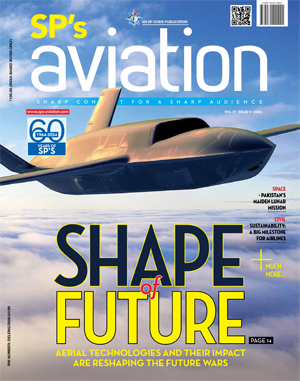INDIAN ARMED FORCES CHIEFS ON
OUR RELENTLESS AND FOCUSED PUBLISHING EFFORTS

SP Guide Publications puts forth a well compiled articulation of issues, pursuits and accomplishments of the Indian Army, over the years

I am confident that SP Guide Publications would continue to inform, inspire and influence.

My compliments to SP Guide Publications for informative and credible reportage on contemporary aerospace issues over the past six decades.
Technology to Offset, At Last!
For the first time, the aim of the offset policy has been spelt out clearly, making it easier for vendors to understand and structure their offset obligations to satisfy Indian objectives
At last, India’s Ministry of Defence (MoD) appears to have appreciated the importance of transfer of technology (ToT) as a vital ingredient in its overall scheme of enforcing offsets while acquiring modern defence equipment from foreign vendors/OEMs. On August 2, the MoD announced a slew of keenly anticipated modifications to its defence offset policy, which came into effect from August 1. In sum, ToT has been made eligible for offsets, multipliers specified, sub-vendors have been allowed to discharge offsets, and the MoD has acceded to the vendor’s requests to relax time frames for the discharge of offsets.
Key Objectives
For the first time, the aim of the offset policy has been spelt out clearly, making it easier for vendors to understand and structure their offset obligations to satisfy Indian objectives.
According to the new policy, the three main objectives of the defence offset policy are:
- To develop Indian defence industry
- To augment capacity for research, design and development related to defence products and services
- To encourage development of synergistic sectors like civil aerospace and internal security
Transfer of Technology
The revised policy tries to clearly define the concepts of coproduction and co-development. Distinction has also been made between equity and non-equity route. It also clarifies that investment in ‘kind’ by original equipment manufacturers (OEMs) through the non-equity route, i.e. co-development, co-production, etc will be recognised for offset credits, however, subject to certain conditions.
In addition, the revised policy allows provision of equipment and/or transfer of technology to government institutions and establishments engaged in the manufacture and/or maintenance of eligible products and provision of eligible services. This, it is hoped, would facilitate capacity building for research, design and development, and training and education, in the government’s DRDO laboratories, army base workshops, naval dockyards and the air force base repair depots (BRDs).
Technology Acquisition
As a special incentive to the OEMs, technology acquisition by the DRDO for a list of specified technologies will be treated as an eligible offset and could be rewarded with a multiplier of up to three. For example, technology valued at Rs. 100 crore could be granted offset credit up to Rs. 300 crore. However, as far as the micro, small and medium enterprises (MSMEs) are concerned, transfer of technology or investment in ‘kind’ through non-equity route, the multiplier factor has been pegged at 1.5, that too when these happen to be the independent offset partners (IOPs).





